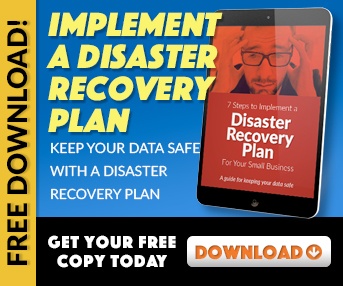In today's digital landscape, law firms face unique challenges in maintaining security and efficiency.
 This blog post is an excerpt from one of our recent FREE e-books of the same name. Click the link below to download the complete eBook. Why You Desperately Need A Disaster Recovery Plan For Your Business. In a study of companies that experience
This blog post is an excerpt from one of our recent FREE e-books of the same name. Click the link below to download the complete eBook. Why You Desperately Need A Disaster Recovery Plan For Your Business. In a study of companies that experience
a major data loss without having a solid disaster recovery plan in place, ONLY 6% survive; 43% close their doors immediately and 51% limp along and eventually close within 2 years. And the situation is getting worse as more and more companies store – and rely on – digital information and systems to serve customers and keep the doors open.
Fact is, every business connected to the Internet with human beings accessing digital information is highly vulnerable to hackers, viruses, data corruption, data loss, system failures and downtime. A disaster can happen at any time on any day; and thinking, “That could never happen to me,” is an open invitation for Murphy to visit you and wreak havoc on your business. (Murphy’s Law: Anything that can go wrong will.)
The cost of the aforementioned disasters is enormous and spread far beyond simple downtime. Client data stolen can cost you big in reputational capital and easily turn into lawsuits and government fines. Extended downtime can cause you to lose customers and miss important deadlines, not to mention put a damper on productivity. And with more and more private data being captured and stored by companies, the long-term losses and legal challenges can have significant short AND long-term impact.
That’s why it’s no longer “nice” to have a disaster recovery and business continuity plan for your business – it’s an outright necessity to protect what you’ve worked so hard to create and achieve. This report will outline 7 simple things you can do right now to minimize the impact or even prevent such disasters.

As simple as it may sound, just thinking through in ADVANCE what needs to happen if your server has a meltdown or a natural disaster wipes out your office, will go a long way in getting your business back online fast. At a minimum, the plan should contain details on what data and systems are most important, and a step-by-step process of how those systems will be secured, backed up and brought back online. Any good, professional IT person or firm can help you with this part of your disaster recovery and business continuity plan. If they can’t (or won’t) find someone who will. Here’s a short list of what your Disaster Recovery Plan should include:
A HUGE mistake made by almost all business owners is thinking that having a backup copy of your data will enable you to be back in business quickly. Not so. Business continuity is the process of planning and systems to make sure your business continues operating after a disaster. We often see business owners shocked to learn that it may take 5-7 days, sometimes more, to get their operations back online and functioning because they only have a copy of their data. Don’t make this mistake! With some simple planning (and help from your IT pro) you can make sure critical operations, e-mail and other functions don’t go down for extended periods of time.
* To see the rest of the 7 reasons, CLICK HERE to download the FREE e-book.

Don’t trust your company’s critical data and operations to just anyone! This business advisory guide will arm you with 21 Revealing Questions you should ask any computer consultant before giving them access to your network.
7500 Jefferson St. NE
Albuquerque, NM 87109
505-823-3400